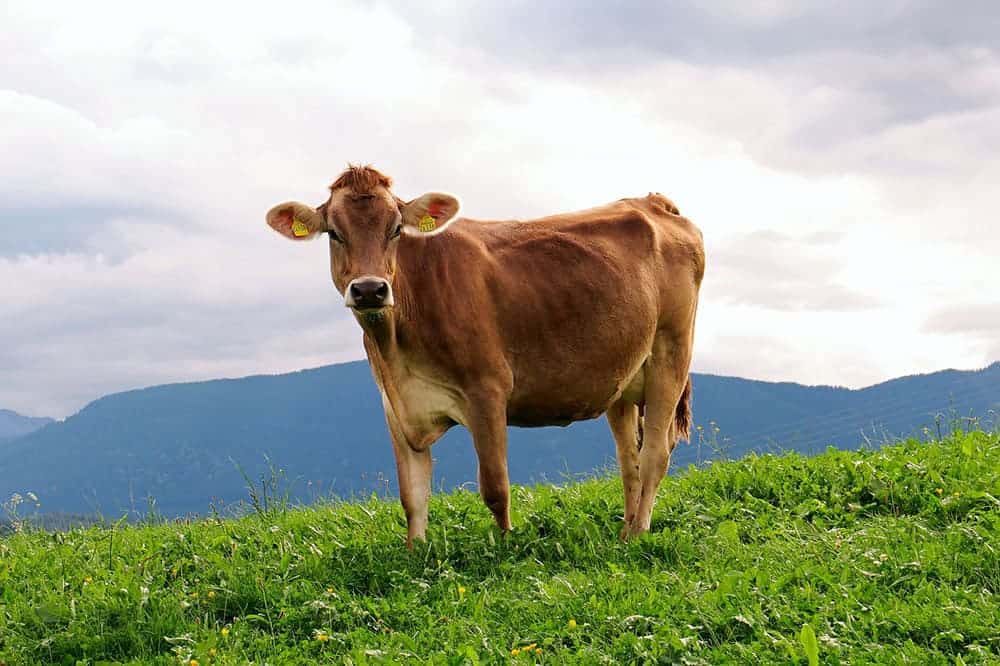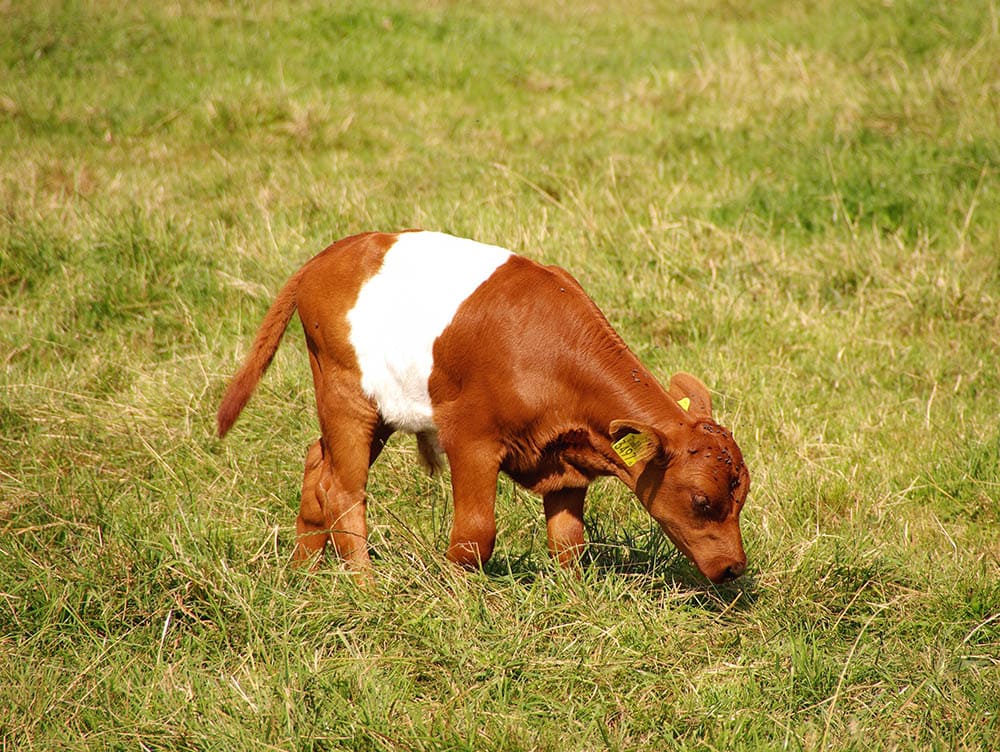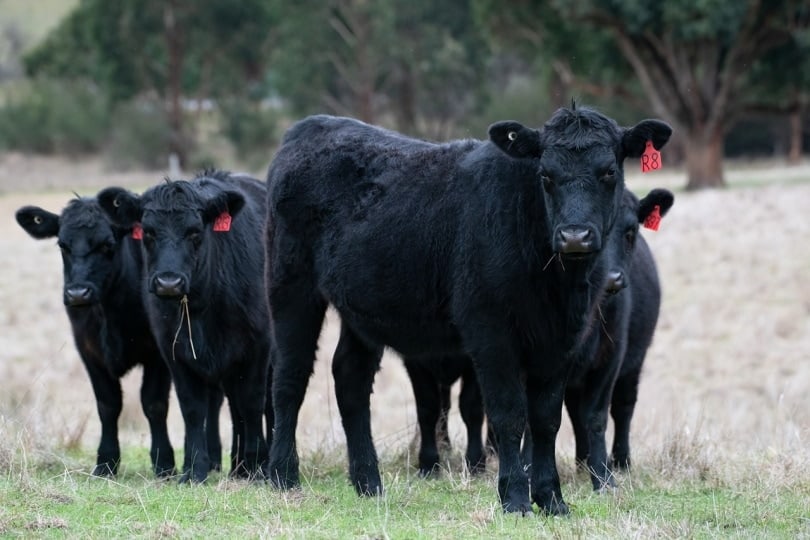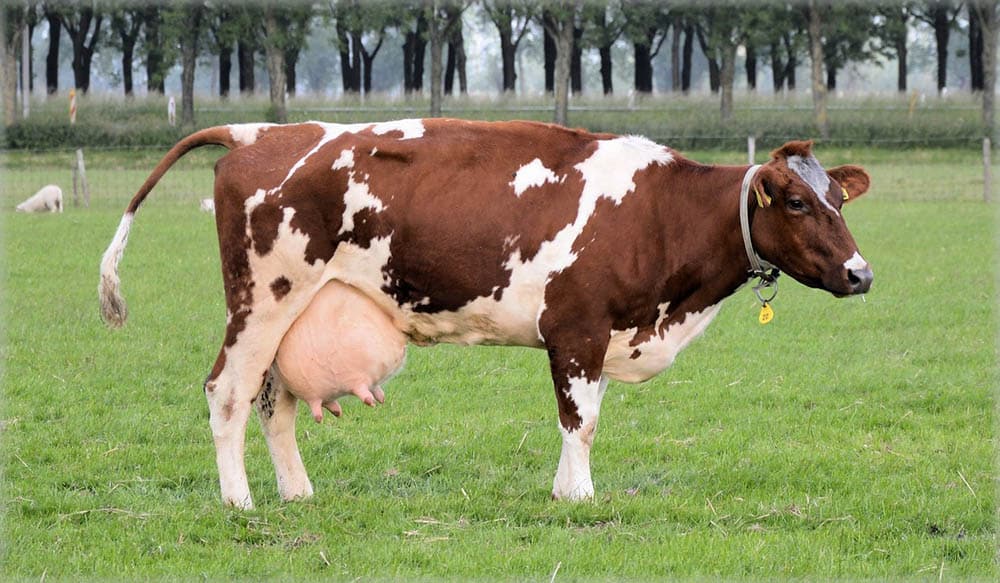Even though all cows are large, the exact weight differs from cow to cow, herd to herd, and breed to breed. Because of this fact, there is no one size fits all answer to how much a cow weighs. Instead, you will want to look at the age of the cow, its breed, and its gender. Only by looking at many factors will you get a good estimation of how much a particular cow may weigh.
An adult bull weighs on average 2,400 pounds, while an adult cow weighs on average 1,600 pounds. To learn about the average weight of a variety of cows, including calf, beef, and dairy cows, keep reading. This article explains the factors that impact a cow’s weight and gives example weights for several breeds. Scroll down for more.

How Much Does a Cow Weigh?
Unfortunately, there is no one answer about how much a cow weighs. Several factors will impact the weight of a cow, such as its breed, age, and gender. As a result, there is a wide range of weights for cows, even cows within the same herd.
For example, the heaviest cow is the Chianina breed, and they are typically around 3,500 pounds. In comparison, the smallest cow in the world is only 20 inches tall and weighs only 57 pounds. Needless to say, cows vary greatly in size and weight.
Still, we can give averages. The average weight of an adult bull is 2,400 pounds, while the average weight of an adult cow is 1,600 pounds. These numbers are just averages, but they do show the differences in weight between gender.

Factors That Impact a Cow’s Weight
As mentioned above, many factors impact a cow’s weight. The most obvious include breed, gender, and age. Beyond that, food sources and individual genetics impact the weight too, which explains why cows of the same age and herd can have wildly different weights.
The most important factors to consider when looking at a cow’s weight include:
- Age
- Gender
- Breed
- Location
- Food sources and nutrition
- Individual traits
Because all these factors impact a cow’s weight, the weights we provide below are averages. What this means is that the weights provided are only estimations. Although these weights give a good idea about the weight of cows, they should not be viewed as concrete proof of how heavy a cow should be.
How Much Does a Calf Weigh?

A calf is a cow or bull that is not yet a year old. Because these cows are so young, they are much smaller and weigh less than their adult counterparts.
At birth, most calves weigh around 82 pounds. Within the first month of life, you can expect bull calves to gain a little less than 80 pounds. Heifers put on a little less weight but still put on quite a bit during the same amount of time. As they continue to grow, they put on more and more weight. Calves can end up gaining hundreds of pounds within the first year of life.
The calf breed can largely impact how much the calf weighs upon birth and how much they put on during the first year of life. For example, a Jersey calf may weigh as little as 93 pounds during its first month in life, while a Brown Swiss can weigh as much as 163 pounds.
| Age | Jersey (lbs.) | Holstein (lbs.) | Guernsey (lbs.) | Brown Swiss (lbs.) |
| 1 month | 93-108 | 119-136 | 122-143 | 134-163 |
| 2 months | 122-146 | 161-189 | 166-193 | 187-223 |
| 3 months | 155-177 | 211-234 | 203-233 | 240-283 |
| 4 months | 183-217 | 258-284 | 255-299 | 293-343 |
| 5 months | 233-278 | 311-339 | 299-354 | 345-403 |
| 6 months | 259-321 | 369-422 | 366-434 | 396-462 |
| 8 months | 335-412 | 468-530 | 433-503 | 498-580 |
| 10 months | 391-483 | 575-653 | 511-588 | 597-694 |
| 12 months | 471-548 | 682-760 | 576-674 | 693-805 |

How Much Does a Beef Cow Weigh?
In comparison to calves, beef cows weigh a lot more. In fact, many beef cows are used for beef specifically because they are very large and offer more meat. Consequently, even beef cow calves weigh more than some of the breeds mentioned above.
One of the most popular beef cows is the Angus cow. When the Angus beef cow is only six months old, it often weighs between 450 and 550 pounds. Mature heifers often grow to be between 800 and 1,400 pounds. Other beef cows, such as the Shorthorn, are even heavier than the Angus.
Likewise, the weight of male beef cows is a lot higher than the female counterparts. Whereas mature Angus heifers are often 1,400 pounds max, Angus males are on average 1,870 pounds. Meanwhile, the Shorthorn males average out at 2,100 pounds.

| Breed | Male (lbs.) | Female (lbs.) |
| Hereford | 1,800 | 1,200 |
| Angus | 1,870 | 1,210 |
| Shorthorn | 2,100 | 1,760 |
| Brahman | 2,100 | 1,320 |
| Simmental | 2,500 | 1,300 |
| Limousin | 2,530 | 1,650 |
How Much Does a Beef Cow Weigh at Slaughter?
At slaughter, most cows weigh between 900 and 1,350 pounds, but the exact weight depends on the customer’s demands.
It’s important to keep in mind that not all cows are slaughtered at maturity. Some clients prefer more tender meat, which is most likely taken from calves. As a result, calves that are slaughtered will weigh much less than mature cows that are slaughtered.
Note that the amount of flesh used for food is not equal to the overall weight of the cow. Instead, only about 65% of the carcass weight is used for food. Let’s take an example. Let’s assume that an Angus female is slaughtered at 1,200 pounds. It is most likely that the hanging carcass weight will only be about 750 pounds.


How Much Does a Dairy Cow Weigh?
Just like beef cows, the weight of a dairy cow depends on its breed. Dairy cows aren’t often as heavy as beef cows simply because they don’t need to produce as much food. Of course, dairy cows are always female, which further leads to dairy cows weighing less than beef cows.
| Breed | Average Weight (lbs.) |
| Jersey | 900 |
| Guernsey | 1,050 |
| Ayrshire | 1,150 |
| Brown Swiss | 1,350 |
| Dairy Shorthorn | 1,450 |
| Holstein-Friesian | 1,600 |


Final Thoughts
Needless to say, cows can come in many shapes and sizes. Whereas obvious factors like breed, age, and gender impact the weight of a cow, so too do the location of its herd and diet. Obviously, cows with constant access to food will be heavier than those with strict eating regimens.
Featured Image Credit: Piqsels
